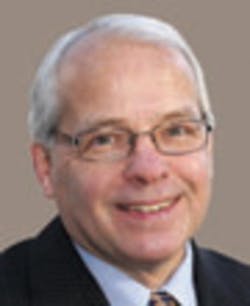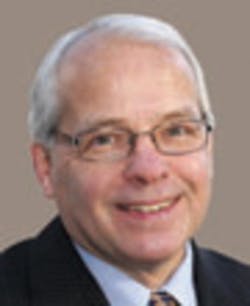The wristwatch might be a handy analog for custom hardware, and it may be losing popularity. Dr. James Truchard, CEO and cofounder of National Instruments, asked attendees at NIWeek 2013, held in Austin in August, “How many people here wear a watch?” Many did, but many also came equipped with a “virtual watch,” a software application that rendered the time on a platform such as iOS or Android.
“Platform” was a term heard as Eric Starkloff, senior vice president of marketing at NI, commented on the advent of the “programmable world” in his own address following Truchard’s opening remarks. Starkloff’s presentation elaborated on concepts he touched on in an exclusive interview with EE-Evaluation Engineering published in the August issue.
The executives’ comments complemented significant product introductions from NI presented at NIWeek. Not surprisingly, the company continued its recent tradition of debuting an annual release of NI LabVIEW. LabVIEW 2013 lets users take advantage of advanced technologies without rewriting their applications or learning new tools. The new release includes support for the latest evolution of the NI CompactRIO platform, the NI cRIO-9068 software-designed controller, which is redesigned but maintains NI LabVIEW and I/O compatibility with the CompactRIO platform. The new version integrates state-of-the-art technologies including the Xilinx Zynq-7020 all programmable system-on-a-chip.
In brief remarks after Truchard and Starkloff’s comments, Bob Leigh, president and CEO of LocalGrid Technologies, said, “Within 24 hours of receiving a cRIO-9068 controller, we ran our existing LabVIEW application software without any problems. We were impressed by the easy software transition between CompactRIO systems and the incredible performance improvement of the new software-designed controller.” LocalGrid uses the controller to build a network platform that allows power providers to cost-effectively deploy modular and standards-based microgrid solutions that support secure, high-resolution analytics and enable control of distributed-generation resources and grid assets.
Apart from specific product introductions, Truchard and Starkloff outlined broad industry trends driving NI’s strategy. In a platform-based world, Truchard said, there are no boundaries between an instrument and the embedded system it emulates. He cited as an example the vector signal transceiver introduced at NIWeek 2012. It’s not only an instrument but a platform for implementing a software-defined radio.
Such innovations, Truchard said, lead to the “4th Industrial Revolution,” in which the world is populated with cyber-physical systems (CPS). NI, he said, aims to do for CPS what the programmable logic controller did for discrete control systems.
Starkloff elaborated on the “programmable world,” a term mentioned in a recent Wired Magazine article. Programmable cars, mobile phones, sprinkler systems, and thermostats will all contribute to a better world, he said, and a programmable world is a platform-centric world.
“Custom hardware design is dead,” Starkloff said, concluding that the future belongs to platform-based design and the community that has arisen to extend and support it. Throughout NIWeek, presenters described their use of standard platforms in a variety of applications: attempting to break the land speed record, searching for dark matter, radio prototyping, ion-beam cancer therapy, a milk chiller for deployment in the remote villages of India, a wind tunnel for aerodynamic bicycle design, a virtual test train for the London Underground, and power-plant machine-condition monitoring.
Nevertheless, the Federation of the Swiss Watch Industry reports impressive levels of exports, with July the fourth best month on record. Don’t count out the wristwatch yet.
Executive Editor
Visit my blog: bit/ly/N8rmKm

